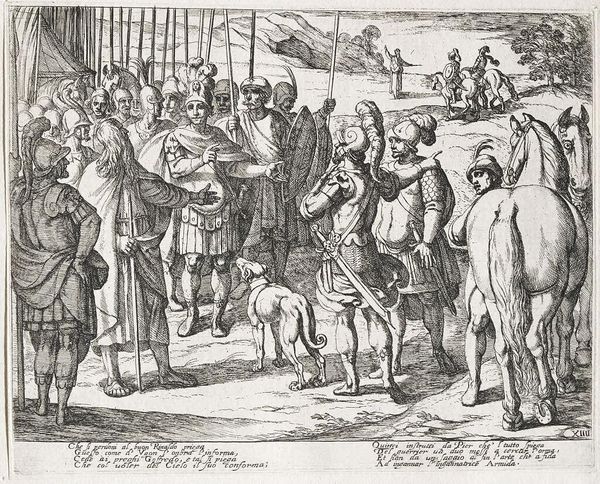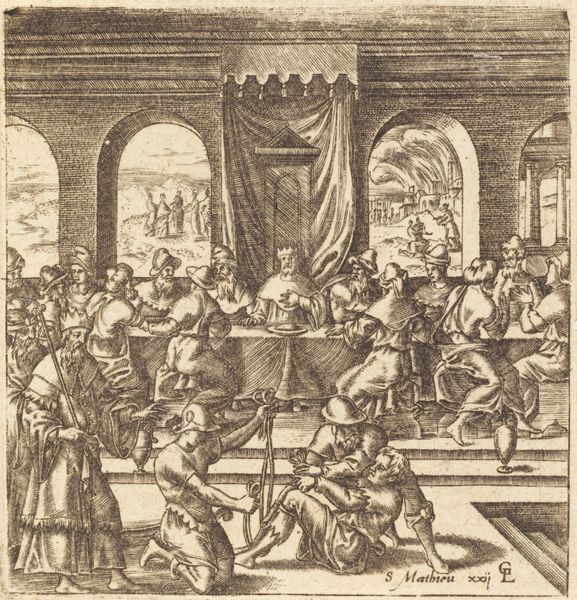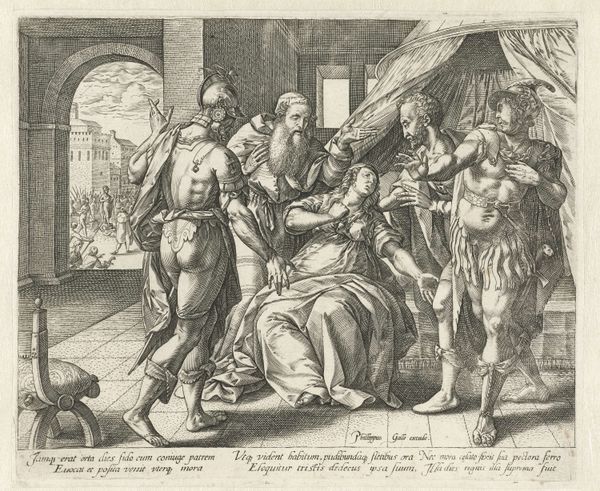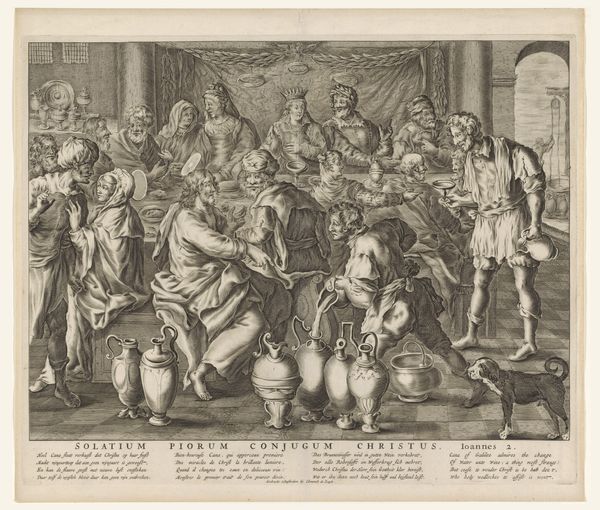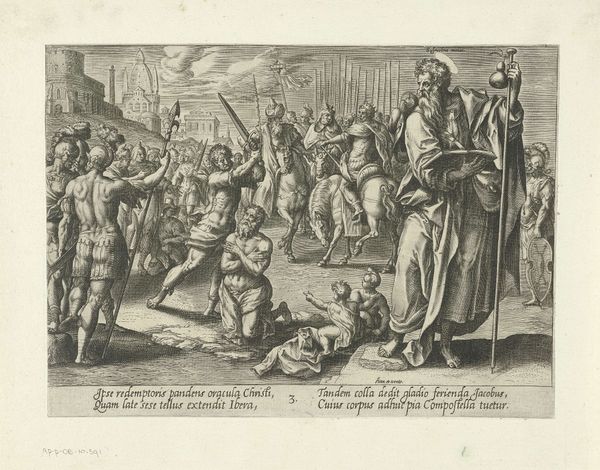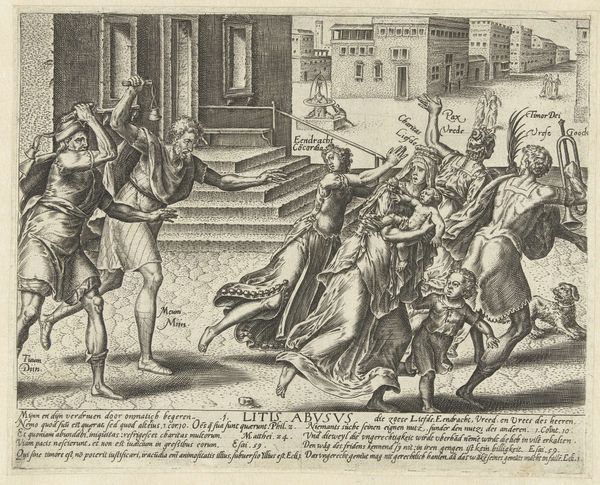
print, engraving
#
baroque
# print
#
perspective
#
figuration
#
line
#
history-painting
#
engraving
Dimensions: height 323 mm, width 685 mm
Copyright: Rijks Museum: Open Domain
Giovanni Battista Vanni made this etching of ‘Christ at the Wedding Feast at Cana’ in the mid-seventeenth century. The original painting of this subject, which served as Vanni’s model, was produced by Paolo Veronese in 1563 for the refectory of a Benedictine monastery in Venice. As an institution, the church has long commissioned artwork that reinforces its own power. But the wedding at Cana is an interesting choice. In the Gospel, Christ’s first miracle entails transforming water into wine at a party. Vanni, like Veronese before him, emphasizes the feast as a site of community. His crowded composition brings together myriad individuals, each with his or her own expressive identity. The image asks us to see the miracle as something that brings people together. How might we better understand this image? By consulting historical sources on the social role of religious imagery, and by focusing on the culture of Venice in particular. Art is always contingent on context.
Comments
No comments
Be the first to comment and join the conversation on the ultimate creative platform.
